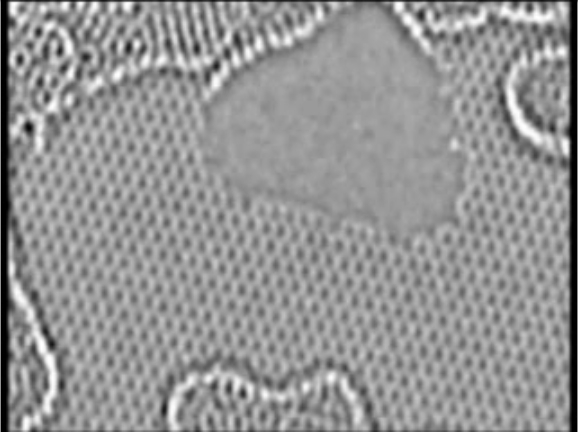
| This video documents what truly should be “wow”-level historical type of moment in material-related sciences. As the folks at the Lawrence Berkeley National Laboratory note, this is equivalent to the first biologist who peered through a microscope and saw a cell divide.
To summarize, this video is no more, or less, than watching for the first time, in real-time, individual carbon atoms being knocked off the edges of a hole in a sheet of graphene while other atoms break and recreate bonds as they shift around in response, looking for the most stable position. The second video contains a simulation of what is occurring (created using a Monte Carlo simulation method to “orchestrate” which carbon atoms leave and which shift). And, like all really great movies, it’s hard to tell who deserves more credit: The actors or the director and cinematographers? The analogy isn’t perfect, but as awesome as this movie is, what is equally amazing is the incredible electron microscope behind the movie – TEAM 0.5. TEAM 0.5, which just recently became operational, is the world’s most powerful electron microscope. The technology behind TEAM 0.5 comes from a team that includes the Berkeley, Argonne and Oak Ridge National Labs, the Frederick Seitz Materials Lab of the University of Illinois, and two electron microscopy companies, FEI (Portland) and CEOS of (Heidelberg). In some ways, researchers are just starting to “play” with TEAM and are already planning on using it on other structures and materials. Nevertheless, this first video is providing new leads and confirmations to those studying spin properties in atoms.
Credit: Berkeley Lab, YouTube
Credit: Berkeley Lab, YouTube |
